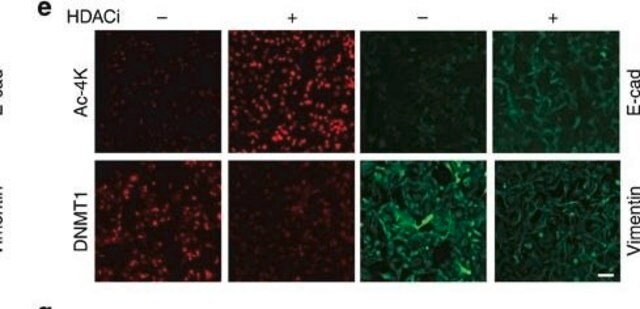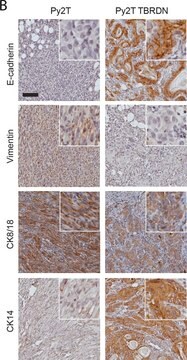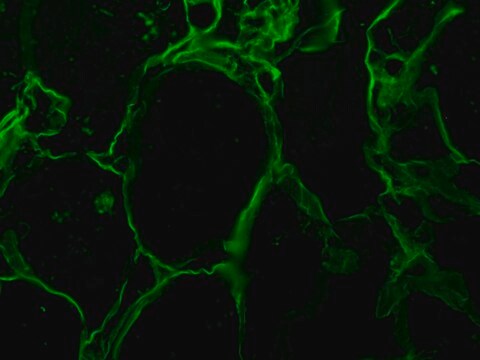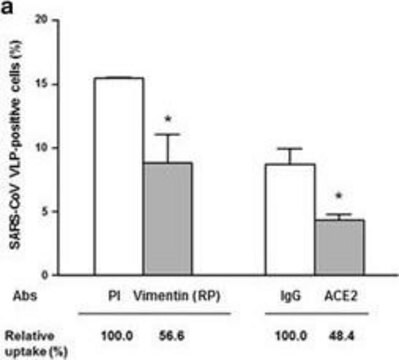Wichtige Dokumente
C9080
Monoklonales Anti-Vimentin
clone V9, purified immunoglobulin, buffered aqueous solution
Synonym(e):
Monoclonal Anti-Vimentin
About This Item
Empfohlene Produkte
Biologische Quelle
mouse
Qualitätsniveau
Konjugat
CY3 conjugate
Antikörperform
purified immunoglobulin
Antikörper-Produkttyp
primary antibodies
Klon
V9, monoclonal
Form
buffered aqueous solution
Mol-Gew.
antigen ~58 kDa
Speziesreaktivität
pig, canine, feline, hamster, rabbit, gerbil, monkey, bovine, chicken, human, horse, rat
Methode(n)
direct immunofluorescence: 1:200 using cultured cells
immunohistochemistry (formalin-fixed, paraffin-embedded sections): 1:50 using human tonsil
immunohistochemistry (frozen sections): suitable using human tonsil
Isotyp
IgG1
UniProt-Hinterlegungsnummer
Versandbedingung
wet ice
Lagertemp.
2-8°C
Posttranslationale Modifikation Target
unmodified
Angaben zum Gen
human ... VIM(7431)
rat ... Vim(81818)
Suchen Sie nach ähnlichen Produkten? Aufrufen Leitfaden zum Produktvergleich
Verwandte Kategorien
Allgemeine Beschreibung
Spezifität
Immunogen
Anwendung
- immunofluorescence and confocal microscopy
- cytoskeleton staining
- double labeling experiments
- immunohistochemical
- immunocytochemical localozation
Biochem./physiol. Wirkung
Physikalische Form
Lagerung und Haltbarkeit
Rechtliche Hinweise
Haftungsausschluss
Sie haben nicht das passende Produkt gefunden?
Probieren Sie unser Produkt-Auswahlhilfe. aus.
Lagerklassenschlüssel
10 - Combustible liquids
WGK
nwg
Flammpunkt (°F)
Not applicable
Flammpunkt (°C)
Not applicable
Persönliche Schutzausrüstung
Eyeshields, Gloves, multi-purpose combination respirator cartridge (US)
Hier finden Sie alle aktuellen Versionen:
Besitzen Sie dieses Produkt bereits?
In der Dokumentenbibliothek finden Sie die Dokumentation zu den Produkten, die Sie kürzlich erworben haben.
Kunden haben sich ebenfalls angesehen
Unser Team von Wissenschaftlern verfügt über Erfahrung in allen Forschungsbereichen einschließlich Life Science, Materialwissenschaften, chemischer Synthese, Chromatographie, Analytik und vielen mehr..
Setzen Sie sich mit dem technischen Dienst in Verbindung.









